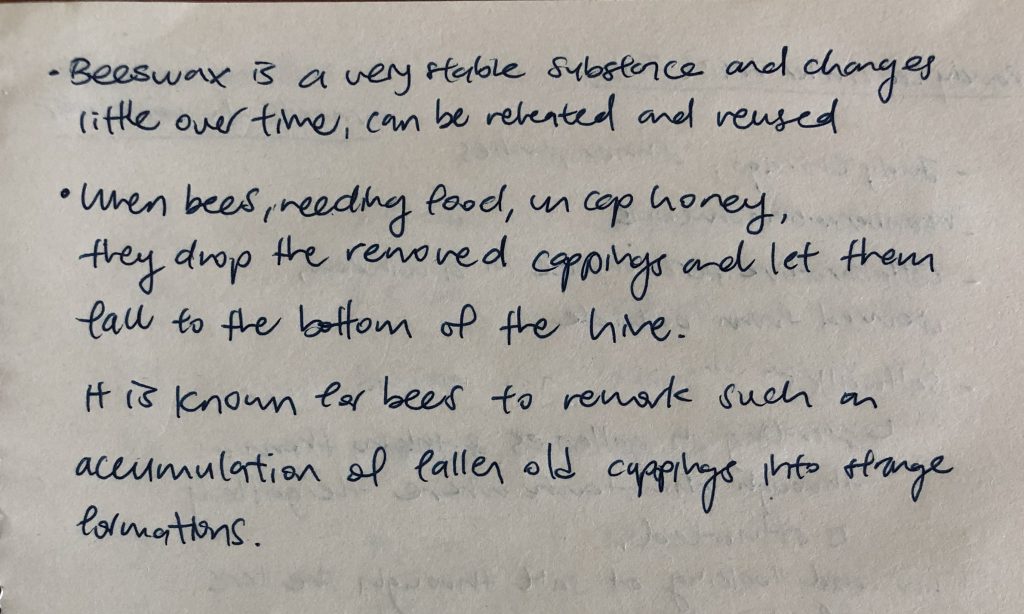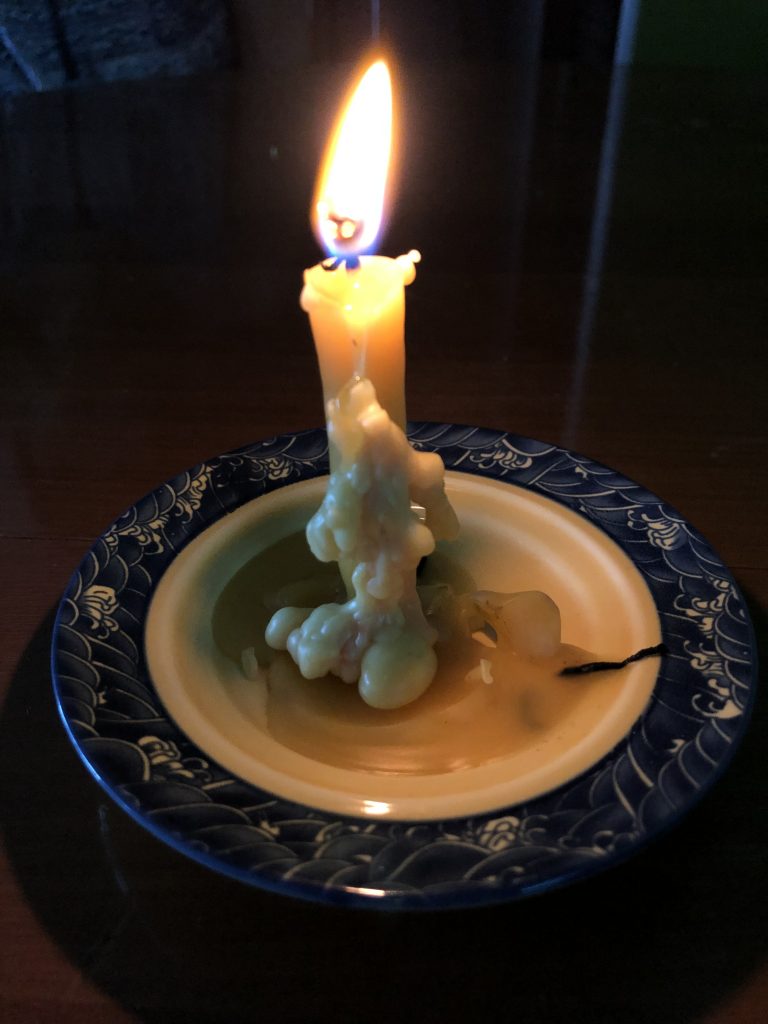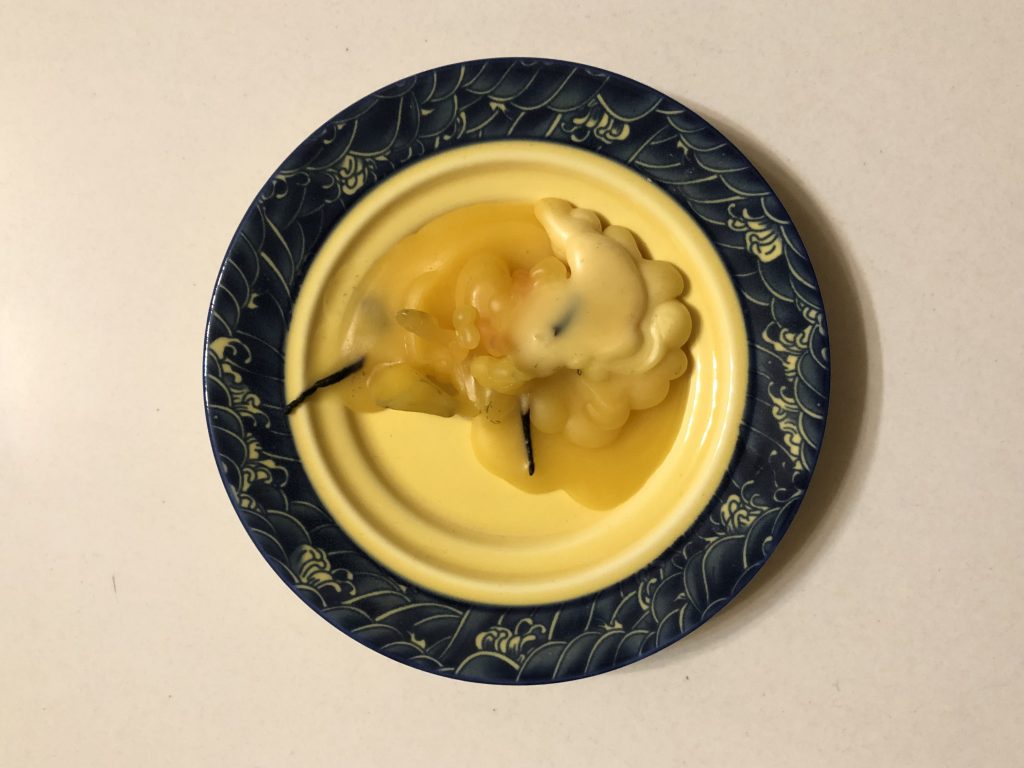Does that mean we have to turn on the light?
Beeswax, cotton cord, words fragment


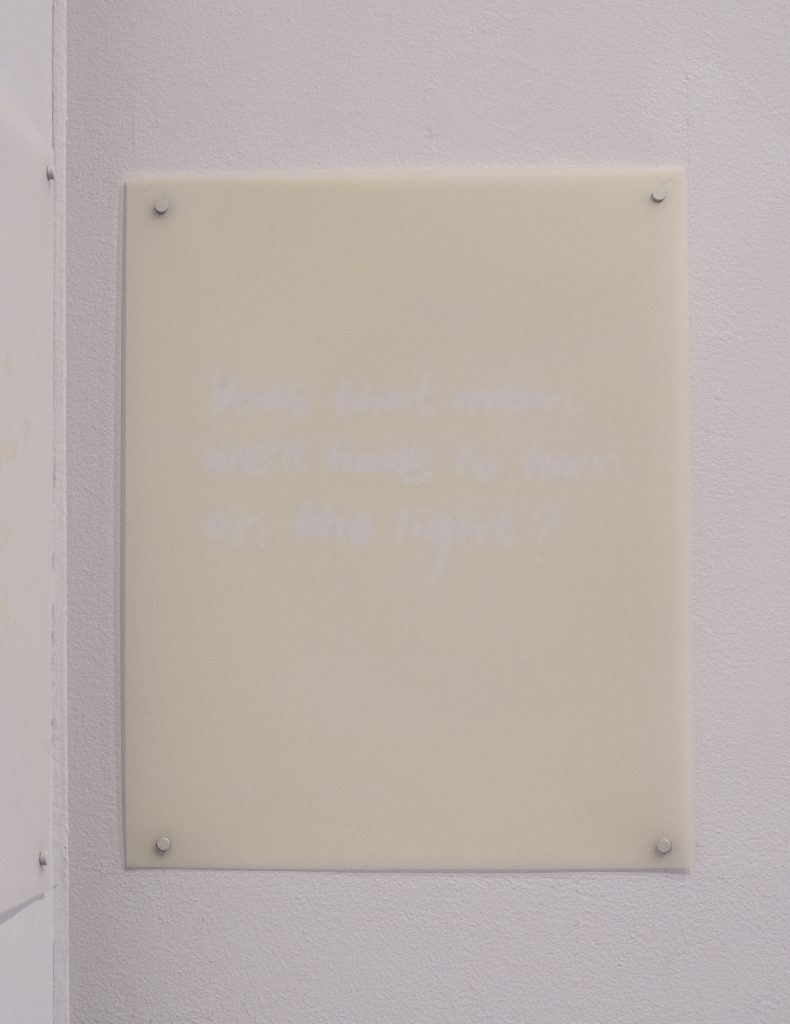


Does that mean we have to turn on the light?
Beeswax, cotton cord, words fragment





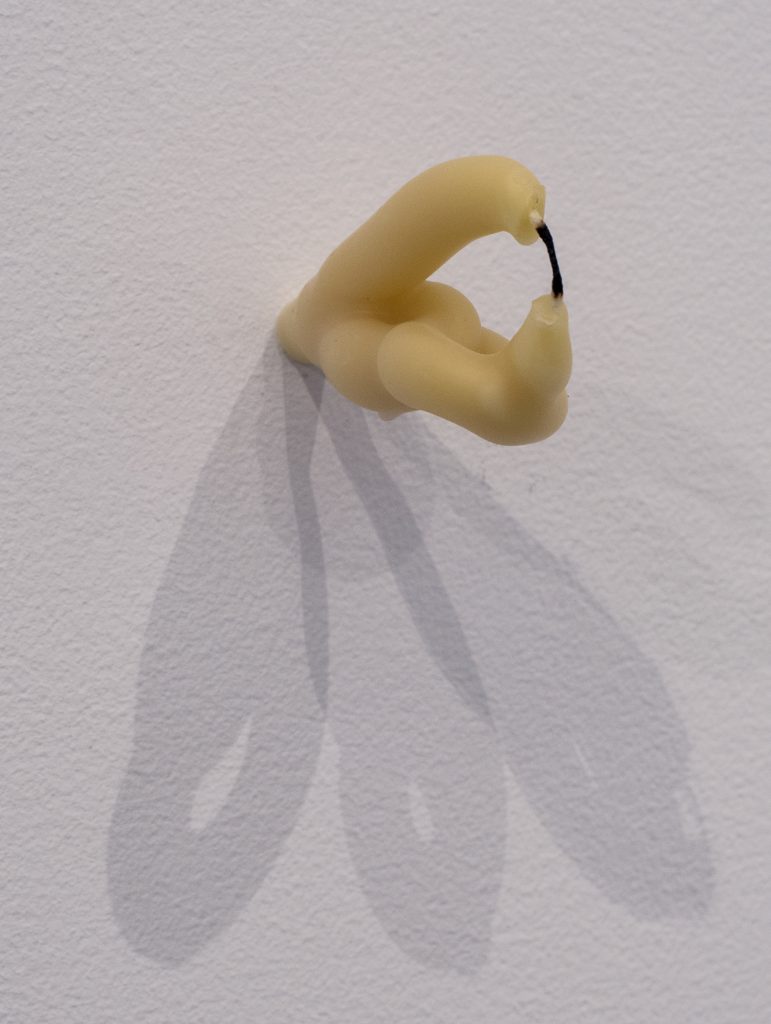
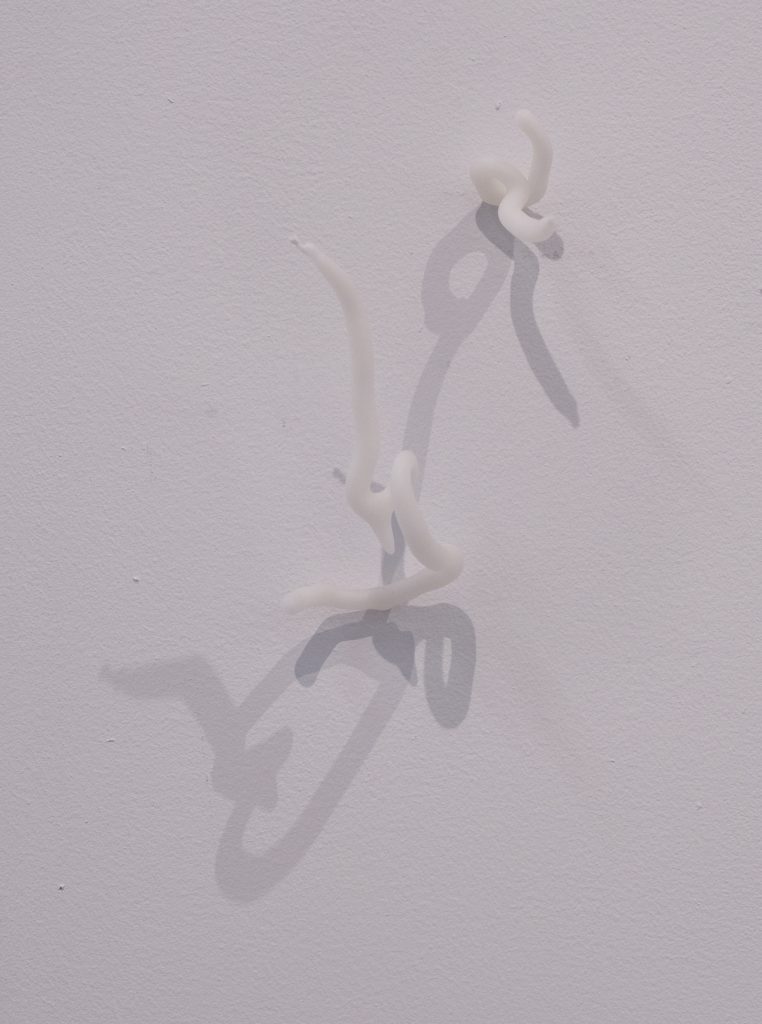
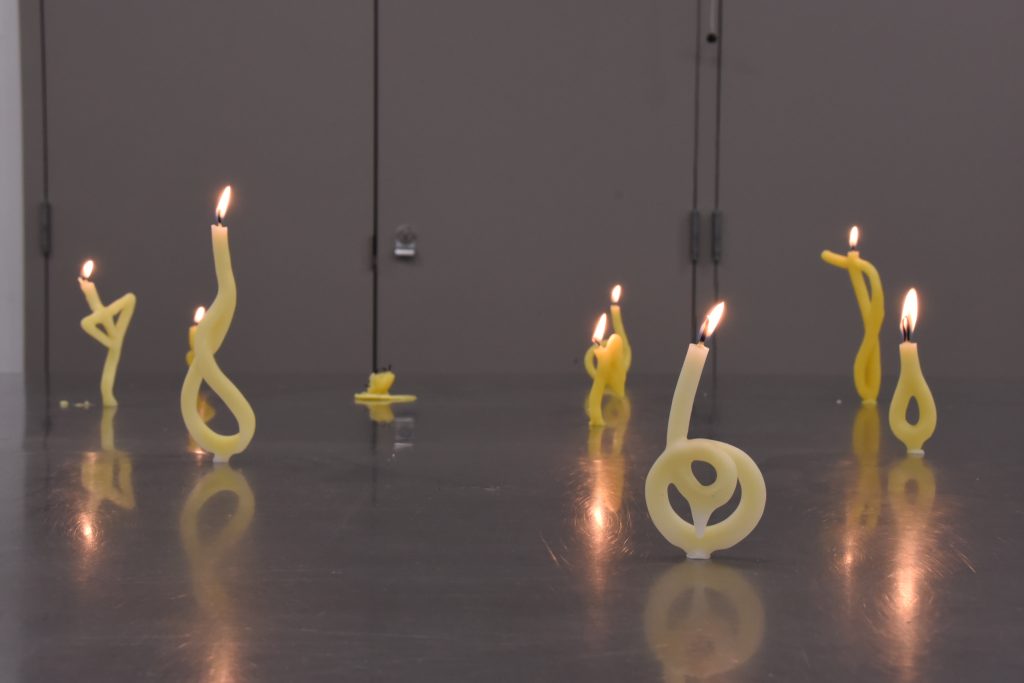
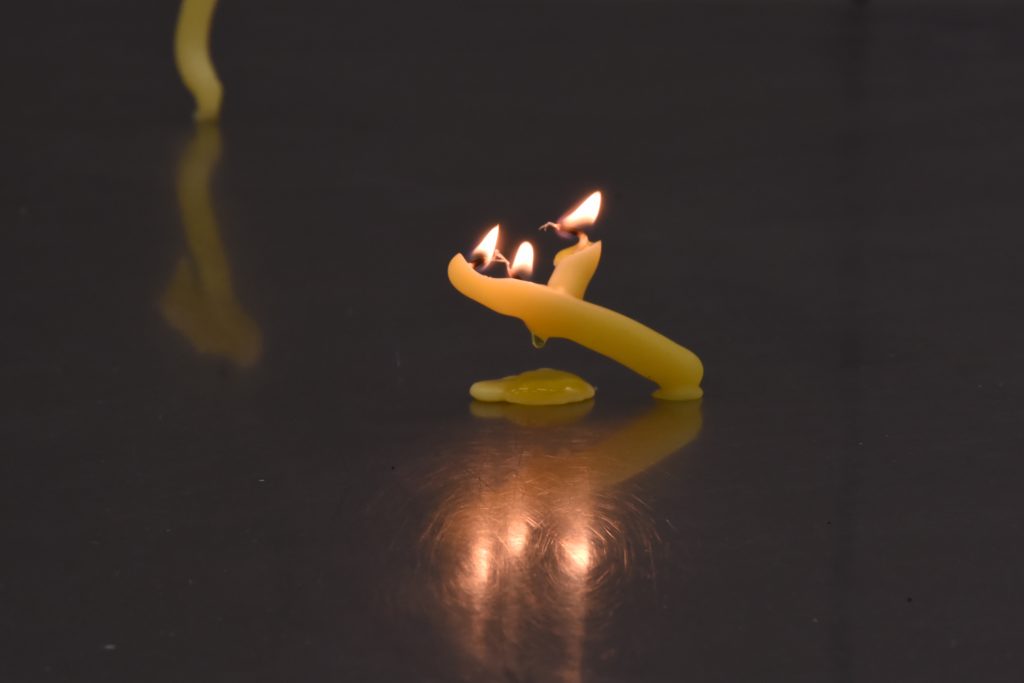
What does it mean when we observe speed or altitude changing the pace of time? How can different outcomes in time both exist in a “superposition”, or even more bafflingly, cause reality to split off into different worlds? Beyond the artificial, oversimplified construct of hours and minutes, the nature of time, which resides in all living and non-living things, is incredibly difficult to understand. For this reason, I have been drawing.
I use thin cotton cords coated with wax to draw. The balance of flexibility and structure lets me draw the line in almost any direction in space. When I’m satisfied with the drawings, I coat it in layer upon layer of wax until it becomes a candle. Neither the wax nor the wick is truly my drawing medium though. The only basic law of physics that distinguishes the past from the future is: if nothing else around it changes, heat cannot pass from a cold body to a hot one. What I am drawing with is the arrow of time – heat and the potentiality for heat.
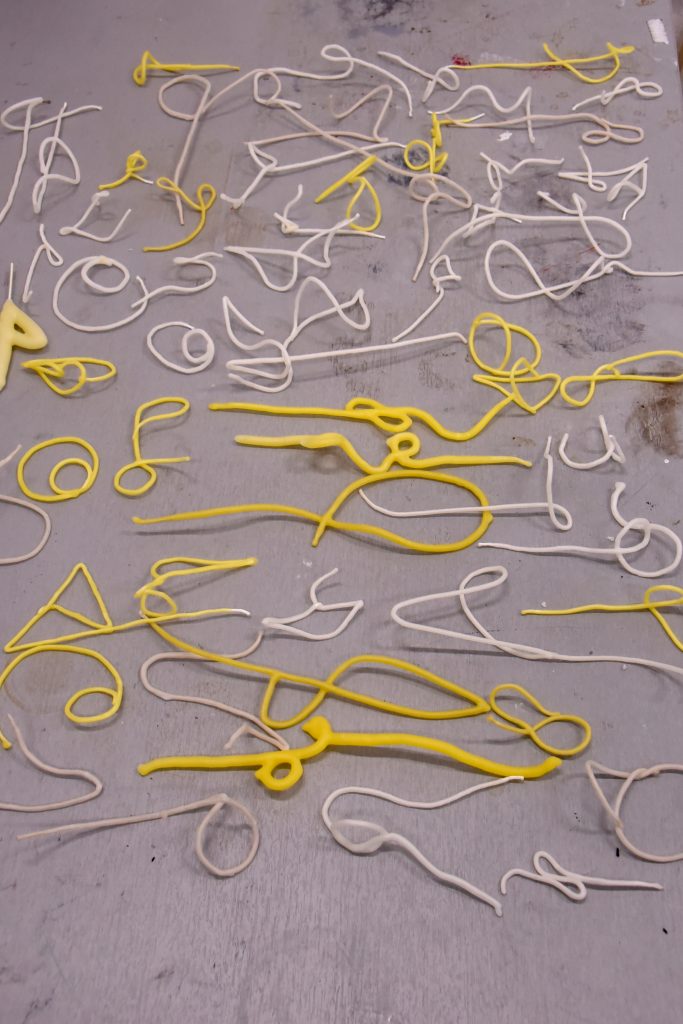
In Andy Goldsworthy’s Storm King Wall, he draws a line that extends from the highway into the river, then emerges from the water and winds through the woods with a stonewall. In Rivers and Tides, Goldsworthy says of this work, “A wall is the line that is in sympathy with the place through which it travels, and that sense of movement is very important to understanding the sculpture. All the movement and passage of people, the movement of the wall, of the stones as they run around the trees, the river of growth that is the forest. And it has made me aware of that flow around the world, the veins around the world.”
Like Goldsworthy, my drawings help me to see what surrounds us but is perhaps invisible to the everyday glance. I am not worried about the exact shape of the lines I draw, because if time is both relative to where we are and constantly splitting into different worlds, then it stands to reason that it exists in every shape, whether we are aware of them or not. I meditate on a memory of mine – important but faded, embedded underneath time – as I draw. I find that the lines I make nearer to the memory are more circular and enclosed, multiple loops leading to the same direction; those that are further away from the memory are more open, gentle bends leading to wildly shifting directions.
In Tim Ingold’s book, he writes about John Ruskin’s leading lines :
“.. lines that embody in their very formation the past history, present action and future potential of a thing. The lines of the mountain show how it has been built up and worn away, those of the tree show how it has contended with the trials of life in the forest and with the winds that have tormented it…”
The lines that I’m finding with candles wicks attempt to show not the history, present and future of a mountain or tree, but that of a memory. From the temporal location of the memory, I turn around and notice that the numerous lines of possibilities in the distance have become much fewer and more enclosed, as I get close to the moment that has already transpired.
When I install my candle drawings on the walls, they cast shadows that look like letters of a language. In Ingold’s text, he asks, at what stage does a child cease to draw letters and begin instead to write? Referencing the work of Russian psychologist Lev Vygotsky, Ingold quotes:
“There is a critical moment, however, at which the child discovers that the mark he has made on paper is a depiction of something, and moreover that this thing bears a name. Thenceforth the naming of the object can precede rather than follow the act of drawing it… But he is still not writing it. Writing calls for one further shift, prompted by the discovery that letters can be arranged in meaningful combinations to form words… Only when he can read can he also be truly said to write.”
Like the child who first draws and then discovers the name of what he has made, I have to first draw before I recognise in them the lines of tree rings, water ripples, gnarly branches, before I discover in them the movement of time. In Ingold’s terms, my candle drawings and the shadows that they cast are notations – notations with multiple but certainly not arbitrary meanings and associations. Despite the visual similarities to calligraphic strokes or alphabets, perhaps my drawings cannot become writings because I cannot read them with certainty.
But by Vygotsky’s definition, I also refuse to let my drawings become writing. In the West, alphabets are used as a tools for communicating ideas in written form. Therefore, it is not possible to write what we do not yet know. Towards the end of the Rivers and Tides, Goldsworthy expresses that it is often difficult for him to talk about his work because his drawings, made from natural materials, create for him a world beyond what words can define. But Goldsworthy’s recurring lines in nature already form a language. I want to propose that we can write what we do not yet know by letting our drawings discover their own layers of notation.
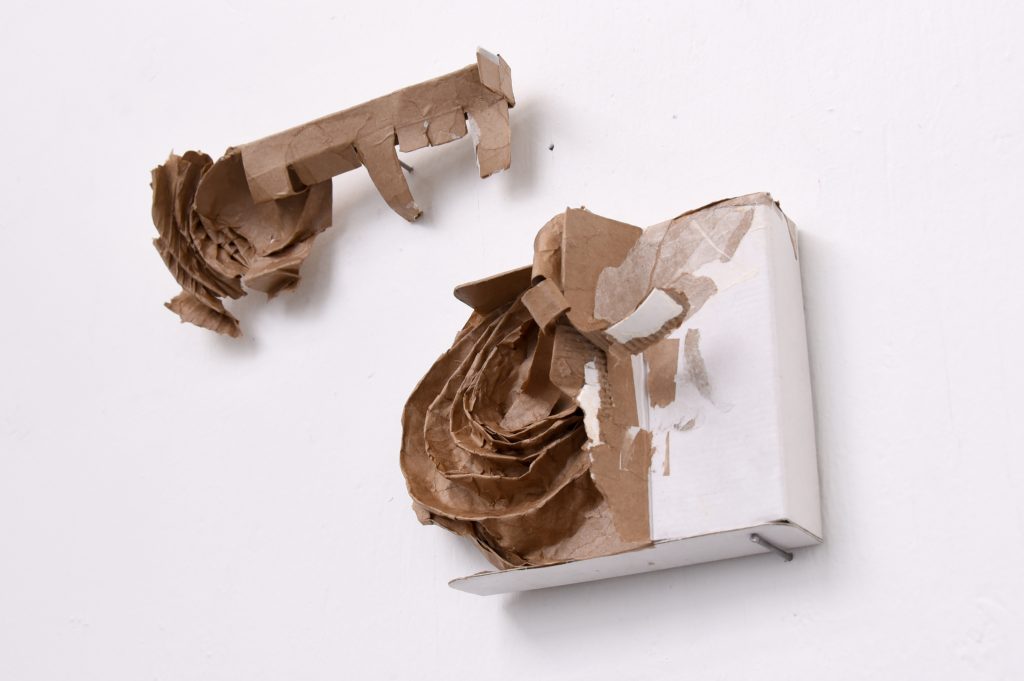

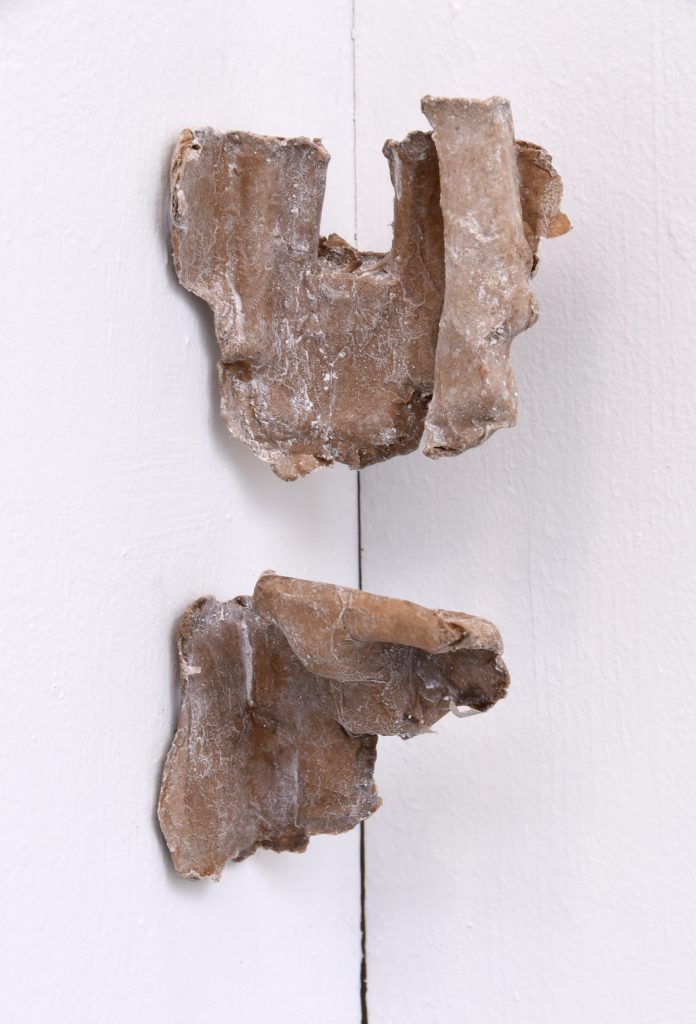
— In progress —
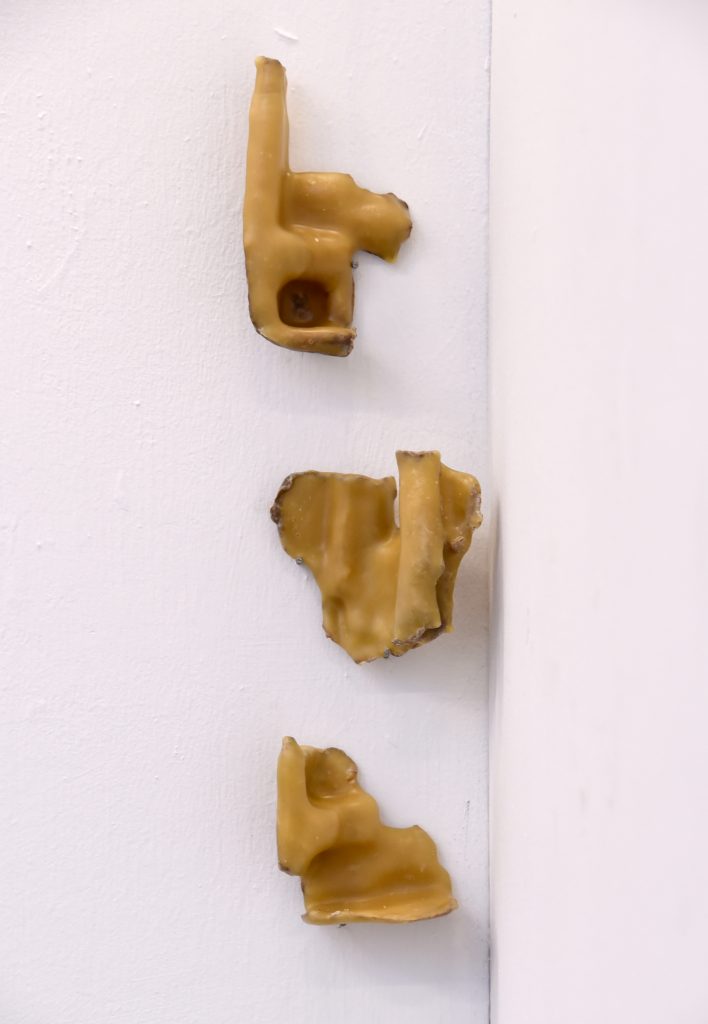
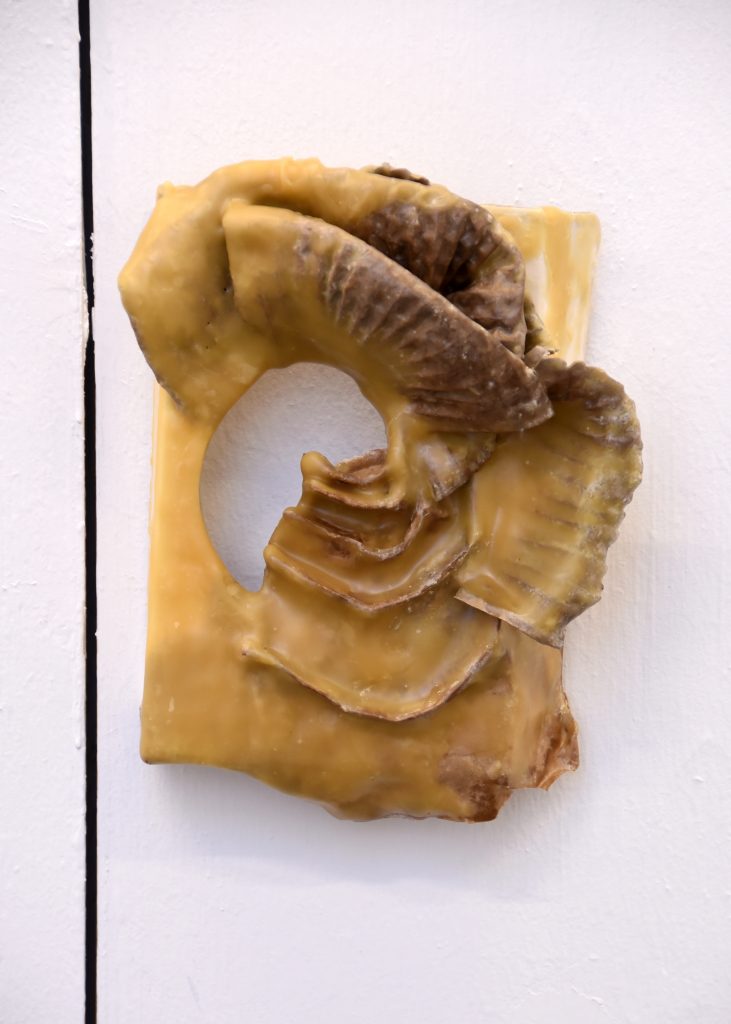
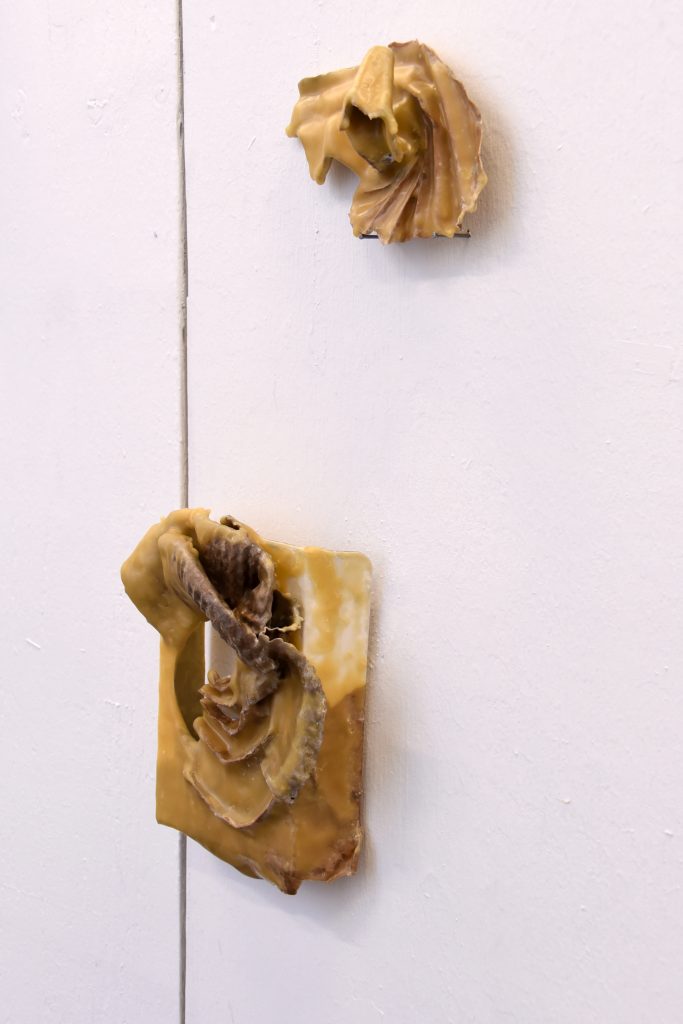
how can you use the experience of the work in the installation space to ask one question?
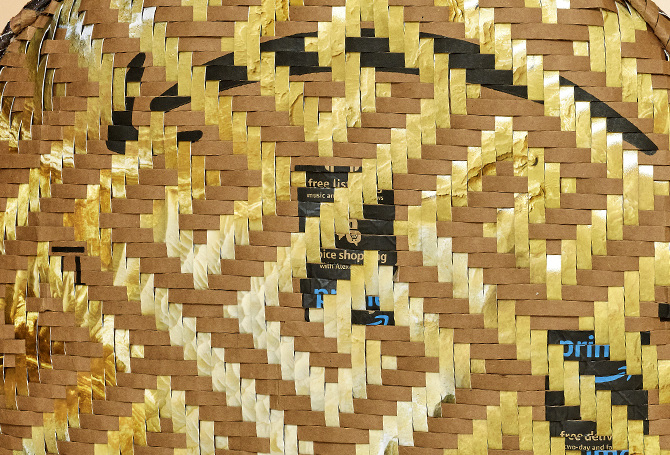
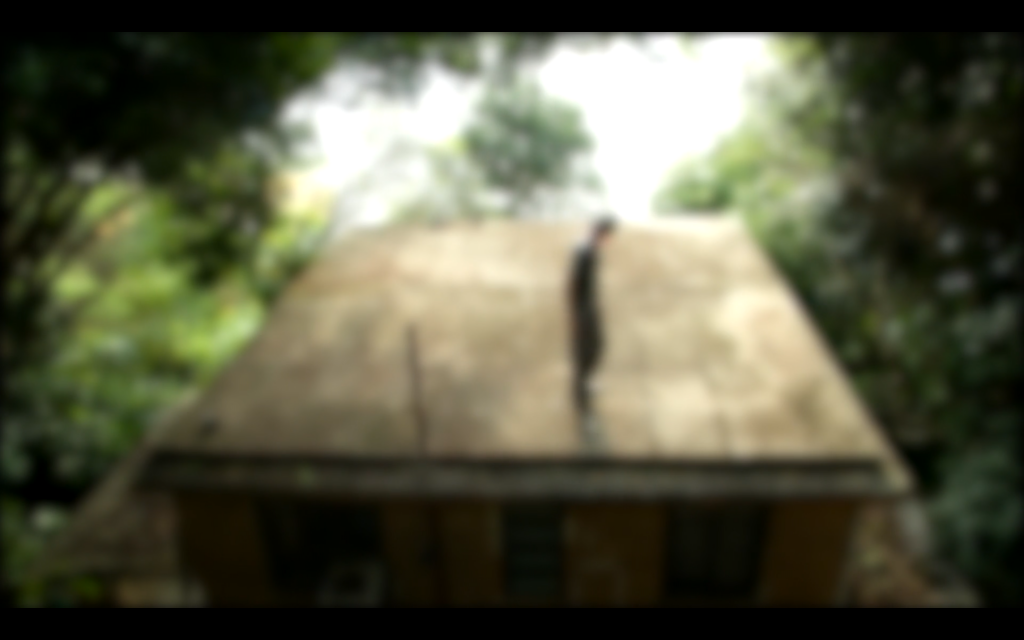
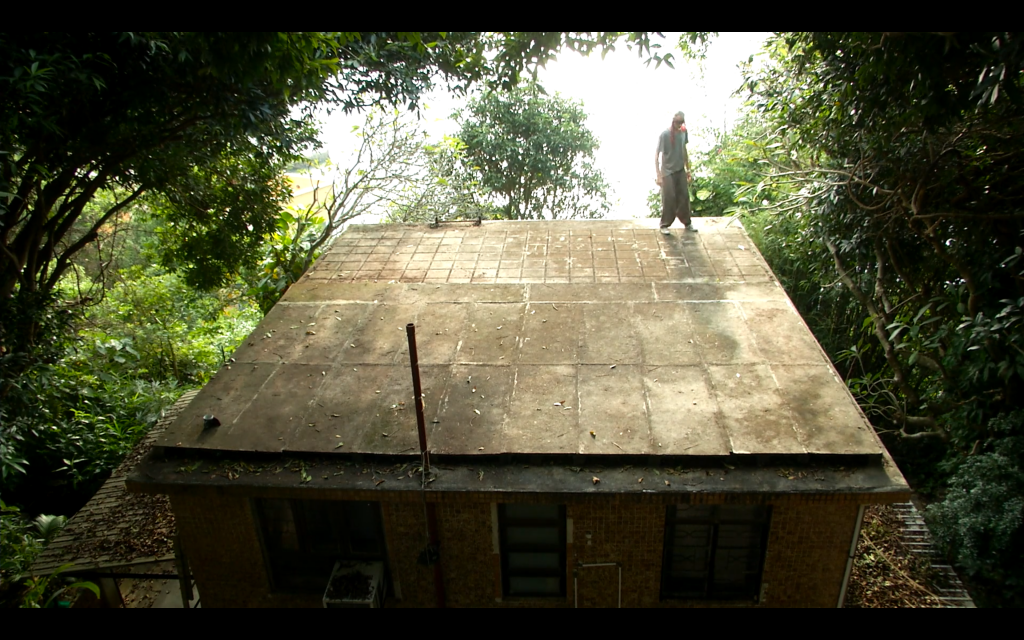

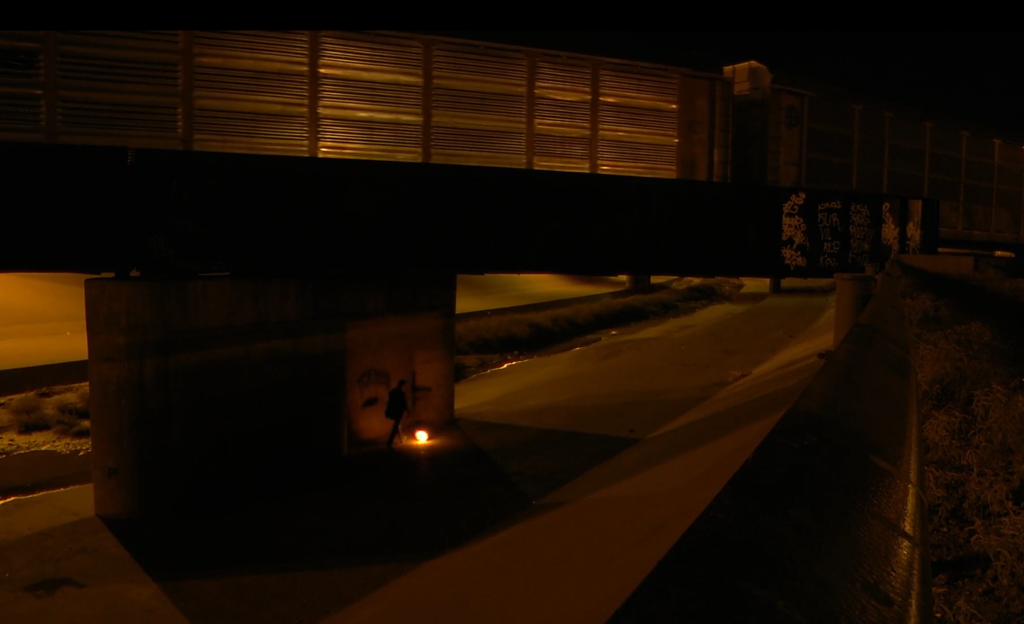
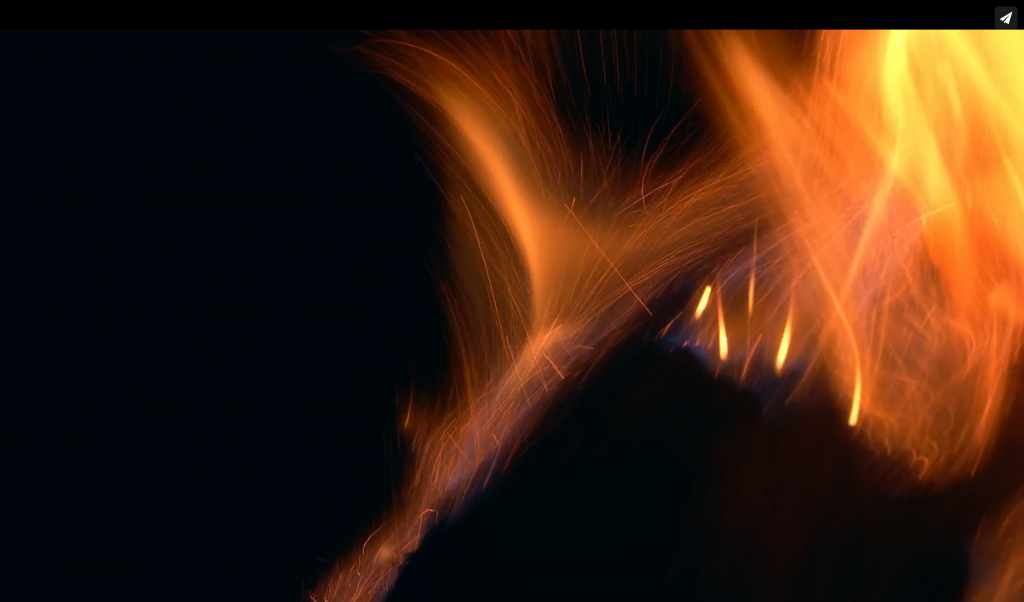
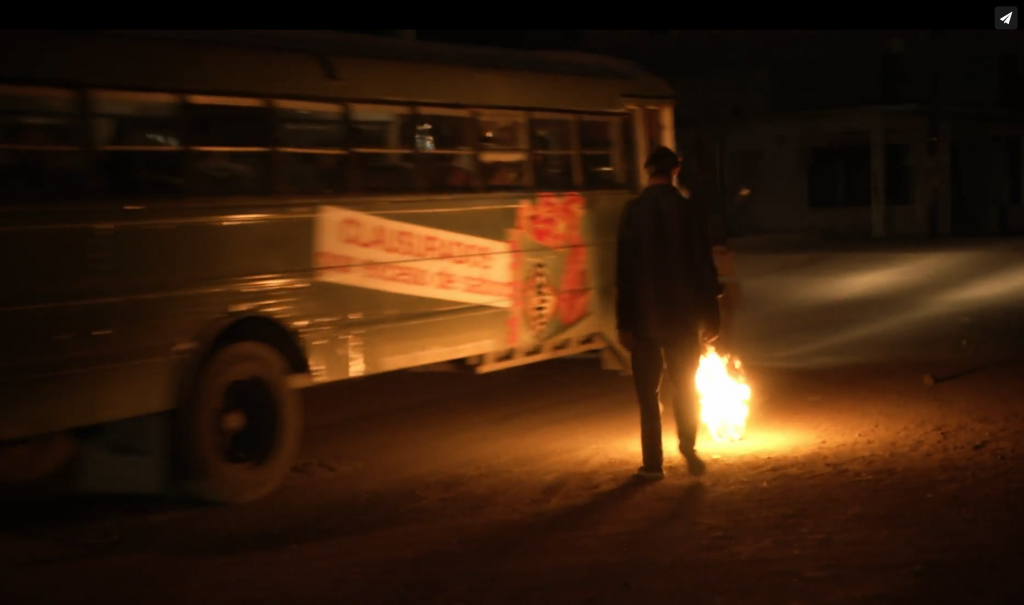
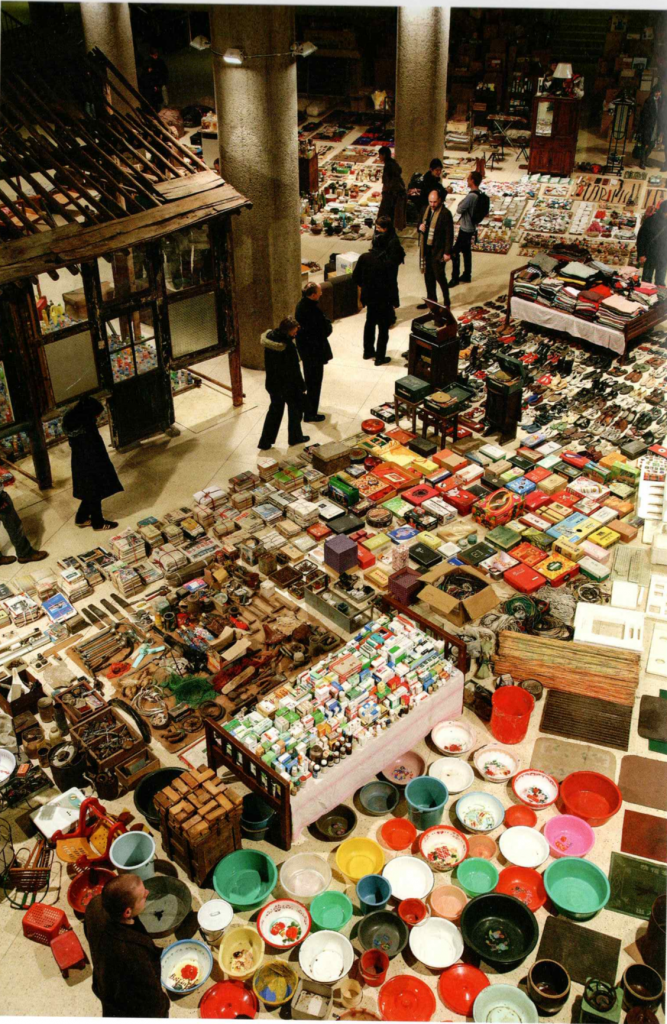
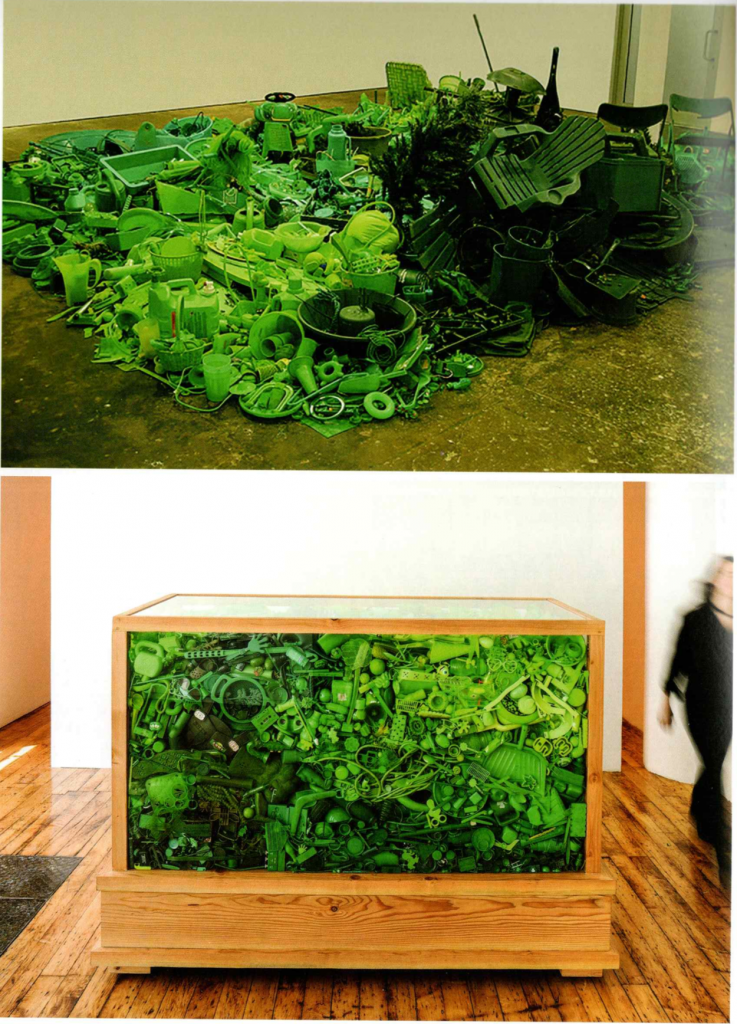

“by considering plastic in aesthetic terms, the artworks discussed in this chapter loosen it from the presumption that it is either a morally contemptible substance or a testament to technological prowess”
this quote is helpful to me because I often feel very bound by the ecological ethics of my material choices, but perhaps it’s worth departing from that. our world is saturated with plastics, and ‘fast time’, so it is reflected in the work, in order for us to ask questions / look at living in that state of contradiction – desiring slowness in a world of fast plastic
“the temporary span of plastic is so great that it always already radiates form the future to the present”
“plastic’s futurity is precisely its existence as a tensile mass that refuses growth and degeneration”
“it forecloses the openness of decay”
jessica stockholder talk

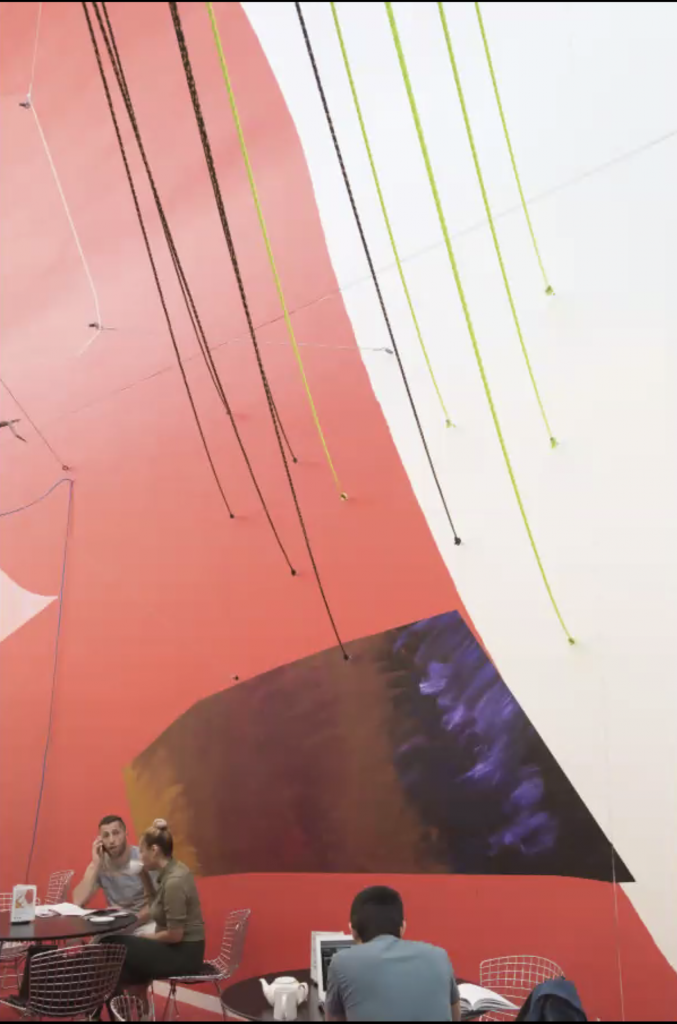
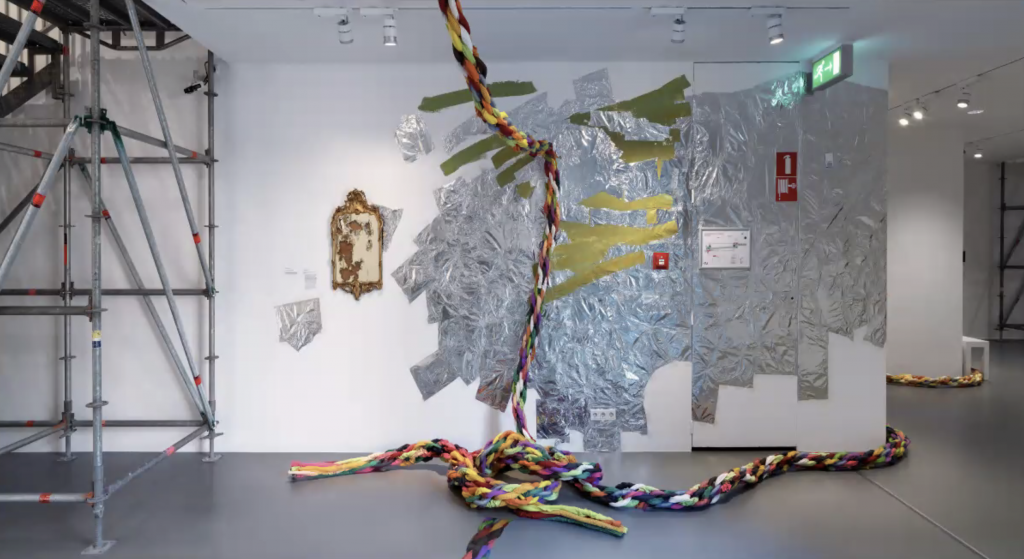



I wake and it’s already bright out,
sun spilling on the white rooftop making it look like a blanket of snow.
The first two durations are tiny.
I could barely light the second with the first without scorching my fingers.
Once lit, I watch the flame. At any moment they could topple and burn through the circle. So I start my day tending.
With the third, urgency faded but I could still do no more than record the shape of this duration with bluepea dye.
Fourth
Shitake mushrooms
Dried tofu skin
Dates, pitted
Goji berries
Watery coffee
There’s a heaviness in my core, a strain in my shoulders,
I wonder if diluted coffee can really wake me.
There’s plenty of time when I finish my meal, so I open Ruth Ozeki’s book.
An old nun Jiko says, “If you start snapping your fingers now and continue snapping 98,463,077 times without stopping, the sun will rise and set… and you will experience the truly intimate awareness of knowing exactly how you spent every single moment of a single day of your life.”
In the circle,
there are no drips.
The only visible accumulation are the tiny grains of soot that appear when I brush on another layer of bluepea dye. Some consumed part of the duration dissolve and smudge into faint streaks.
(excerpt from Two Days)
In every moment, we experience layers of time, woven from memories of the past and anticipation of the future. These layers influence how we experience the present. Now, I am sitting here writing at 9:10pm, but I am also conscious of:
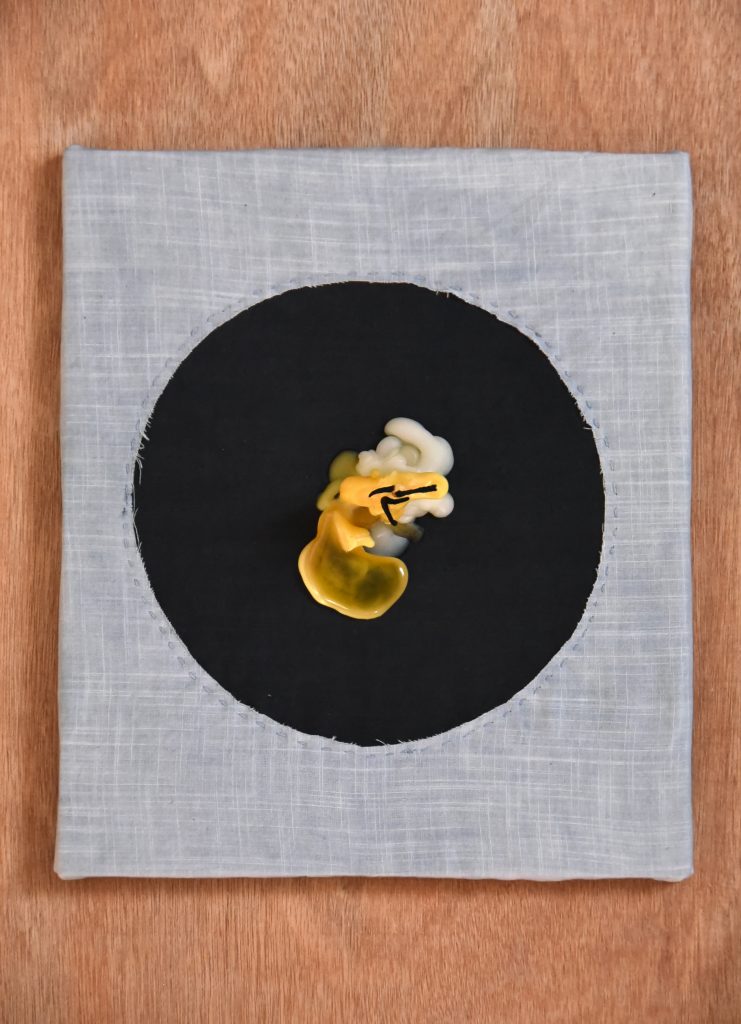
The move I made from Singapore to Vancouver last week.
The two week quarantine I am in, of which ten days have passed.
The next parcel that will arrive via DHL, which is projected to take 2 days.
The finite but unknown span of my life.
The last time I received a voice message or text from my friend Asch, who I usually hear from daily.
The move I made from Atlanta to Singapore three years ago, which made me feel just as foreign as I do now.
Some of these temporal layers have no known durations, some of them straddle across different spans of chronological time. But together, these shifting times form the ground of all my experiences.
In contemporary life, we are expected to divide time into clinical blocks of hours and minutes. We are so accustomed to converting time units into wages or prices, we constantly measure our experience of the present against the rigid divisions of hours and minutes to determine our own ‘productivity’ and value.
Because I feel that the linear and clinical way of dividing time into hours and minutes falls far short of understanding what the value of time truly is to us, I’ve been experimenting with making objects that can be used to measure and inhabit time differently.

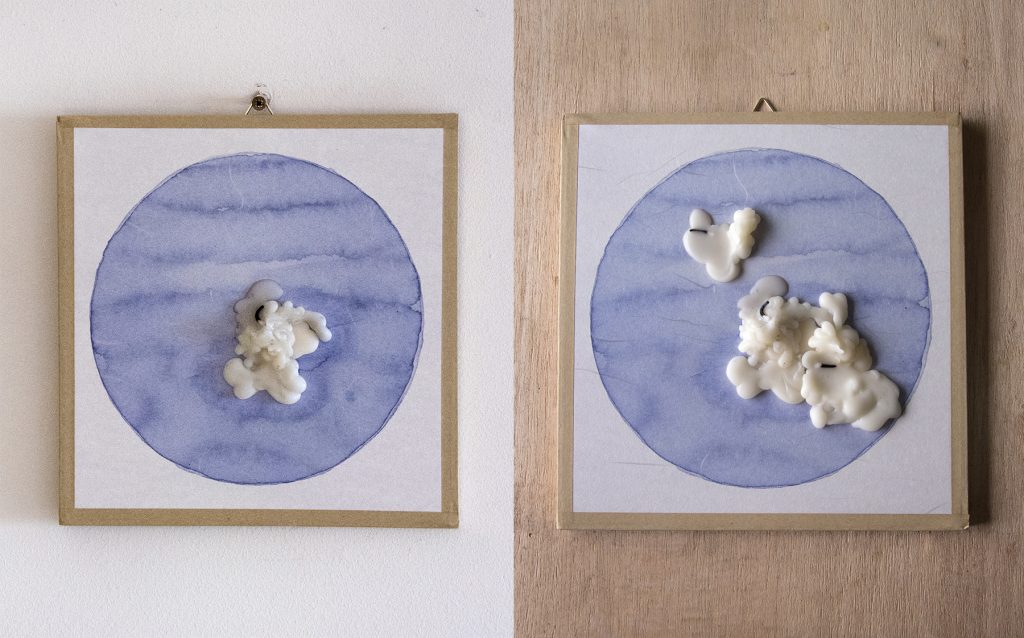

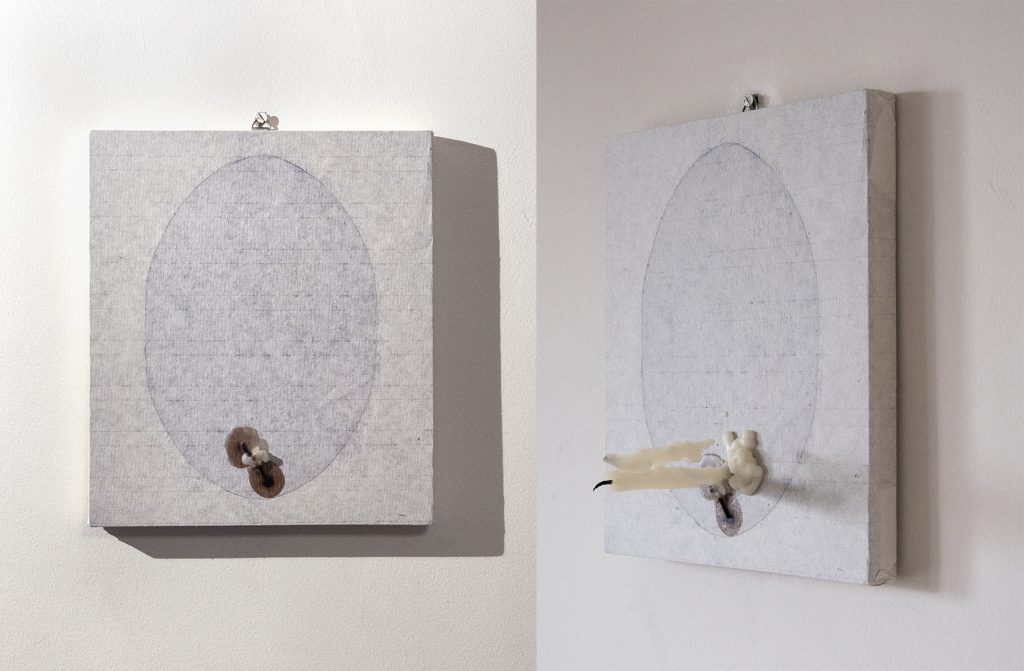

I think of these as experiments. Like I’m inventing clocks and working out the kinks. Except how I evaluate these clocks is not their mechanical precision but how they influence the way time can be experienced or visualised. Right now I’m working with candles because before the invention of pendulum clocks, candles were widely used across many parts of Asia to measure time.
I’m also interested in the heat generated by the burning of the wick. The only basic law of physics that distinguishes the past from the future is that: if nothing else around it changes, heat cannot pass from a cold body to a hot one. None of the other elemental laws of physics distinguish between the past and future.
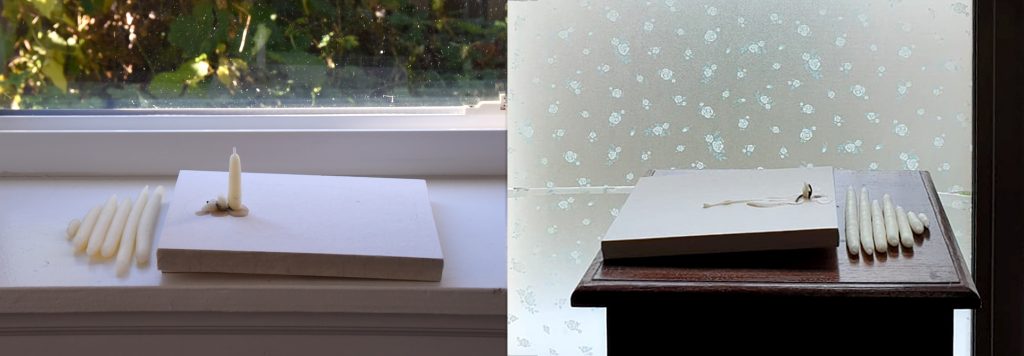
We are expected to divide time into clinical blocks of hours and minutes, but that doesn’t really allow us to understand the value of time to us. I’ve been trying to make objects that can be used to measure and inhabit time, but I’m not interested in mechanical precision.
The only basic law of physics that distinguishes the past from the future is that: if nothing else around it changes, heat cannot pass from a cold body to a hot one. None of the other elemental laws of physics distinguish between the past and future.
Time moves at different speeds in different places
Times moves at different speeds depending on how fast you’re moving.
Most of the universe consists of times that neither the future, present or past relative to us.
How do I touch what is too abstract and large to really understand or experience?
Thinking about: rituals and magic (the appeal and discomfort of that), sandplay – a form of play therapy often used with children to access the subconscious mind
I made this divination tablet from porcelain to use with beeswax. For this first session, I asked my mother whether she had any questions about the past or future.
She wanted to know what the next five years might look like. I arranged the pieces according, she chose a candle location, and after the process we interpreted the plate together.
I do have audio recordings of our entire conversation, but it’s very candid, and I’m not sure if it’s an essential component of this.
I also struggled with duration for this. This process took a long time – almost 40 mins. Although I am interested in slowing time, I’m not sure where to go with this length of time yet. Maybe I will make much shorter candles, maybe I will experiment with other ephemeral materials to denote time.
When I edited the video for uploading, I did cut out a lot of parts and fast-forward a few other parts. But that felt so wrong, to seek the moment when exciting changes happen to the wax for visual satisfaction.
I was drawn to both the idea and visuals of tending to / take care of the flame. You can’t just light a candle and just walk away in this set up because it might blow out. Unlike time on a digital clock, which we can just leave running and running, paying it no mind as we scroll online or jump from task to task, as though we had endless time to use.
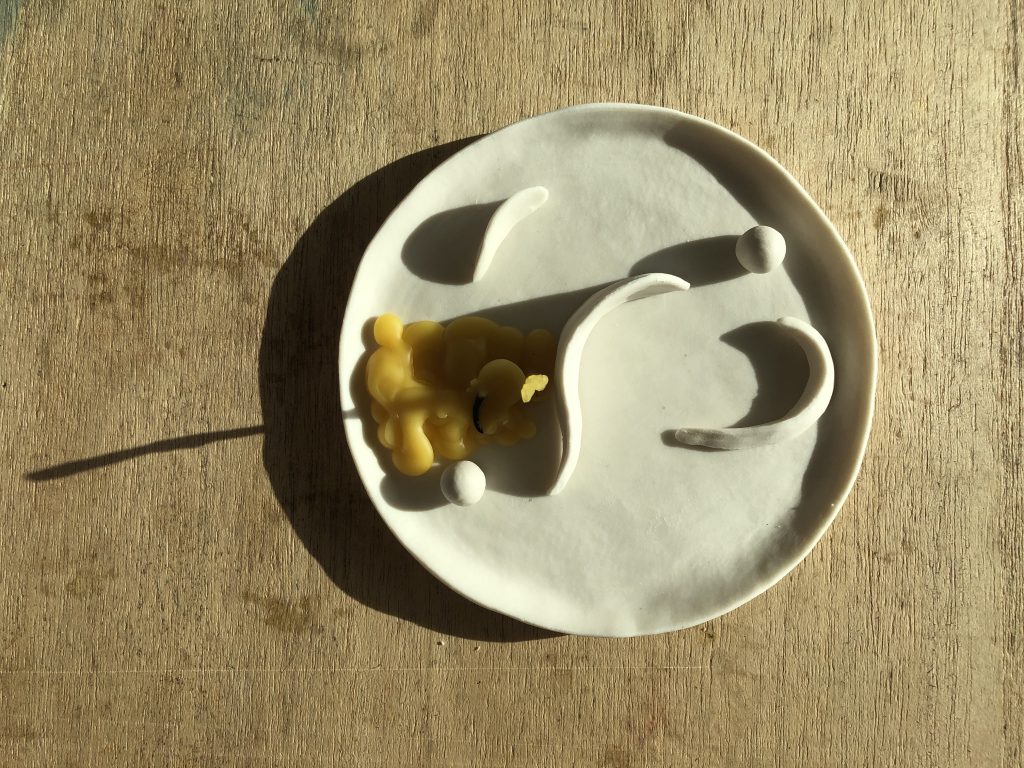

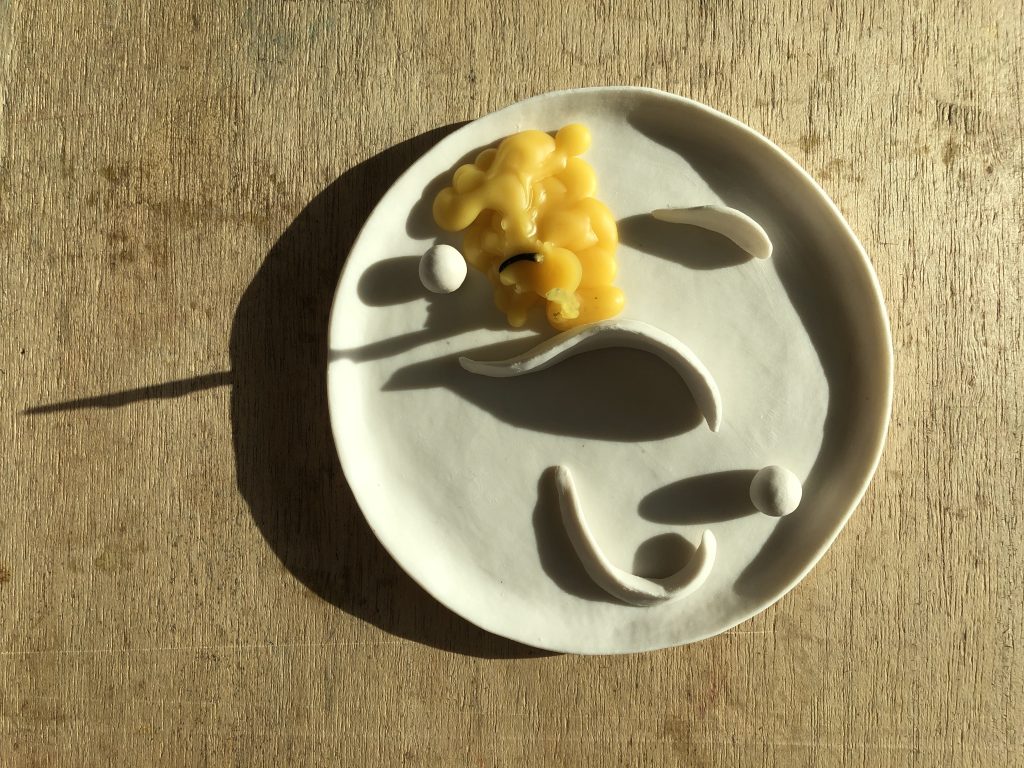
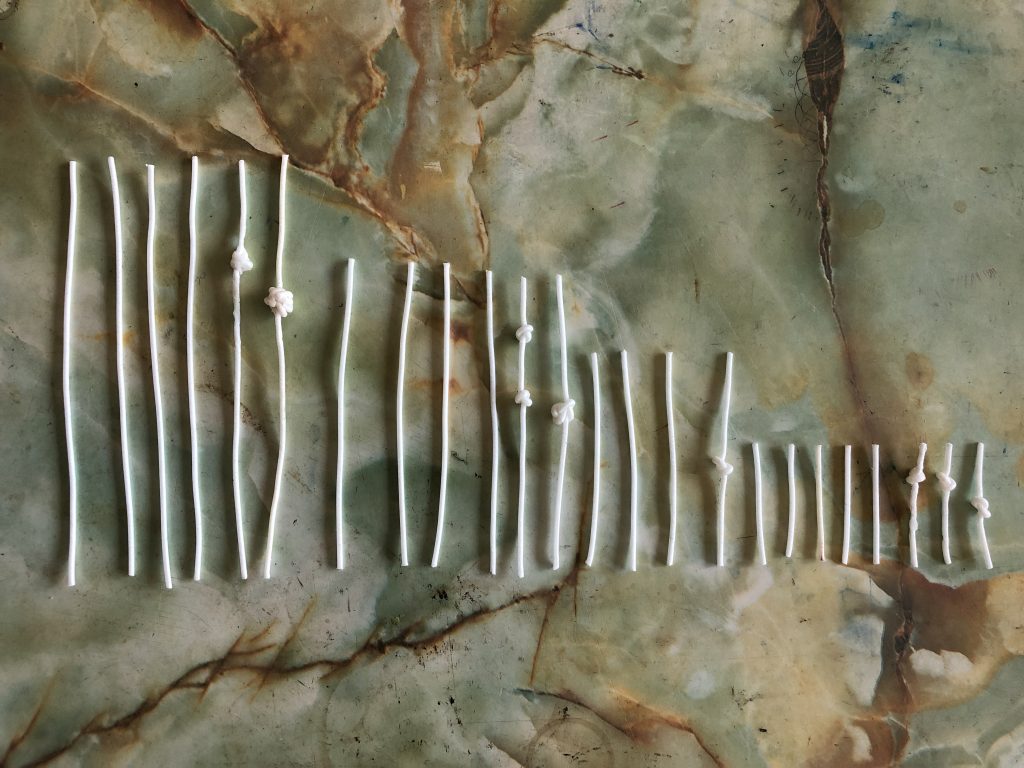
Experimenting with the burn time of candles in relation to length, weight and density/thickness of wick
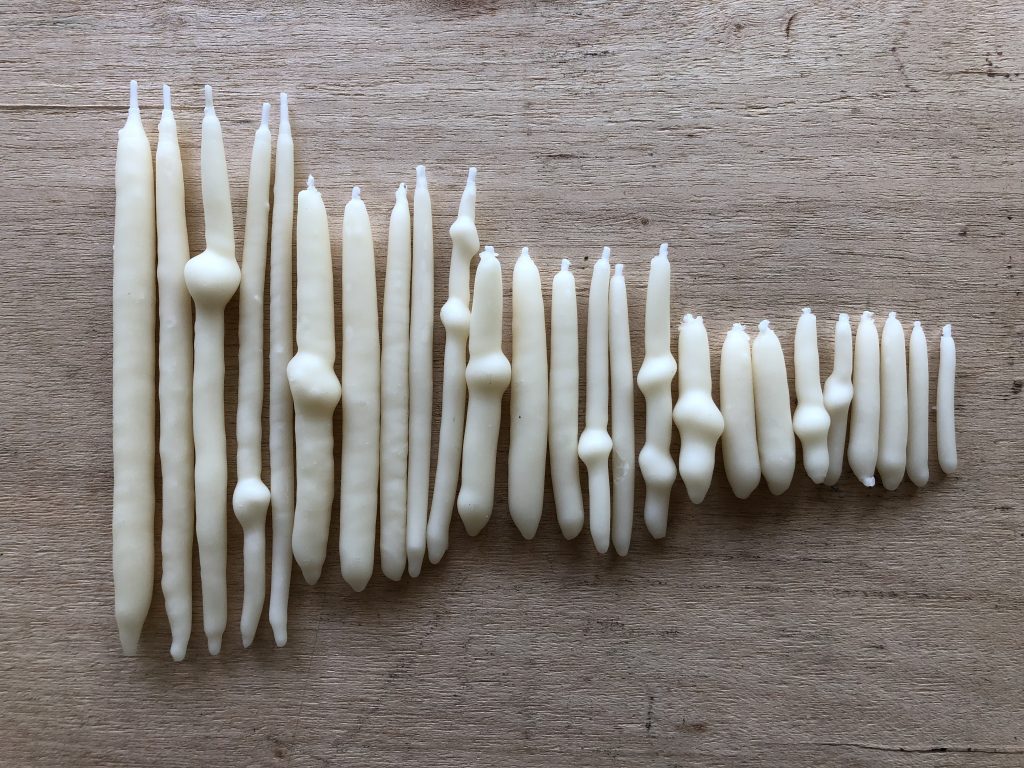
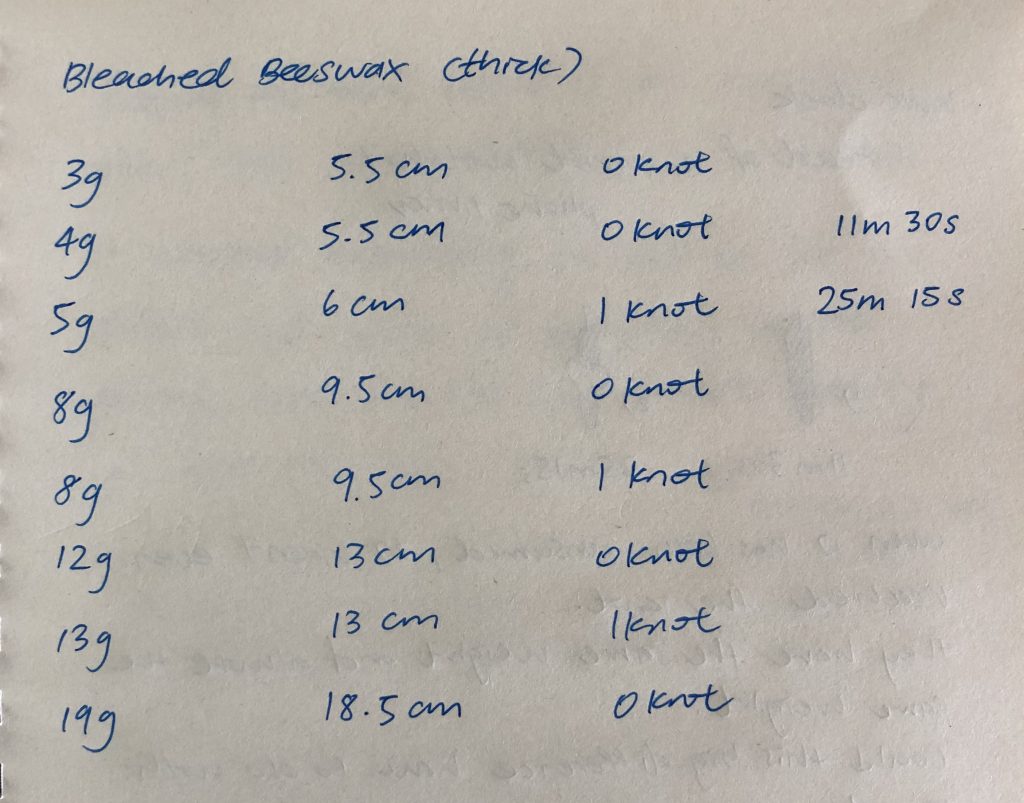

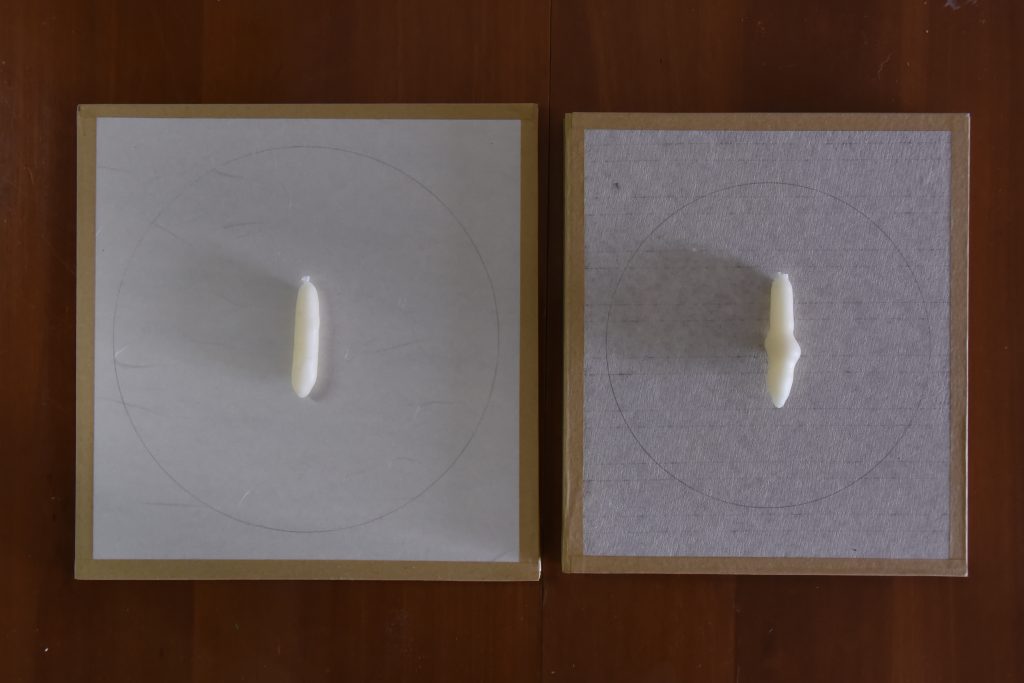
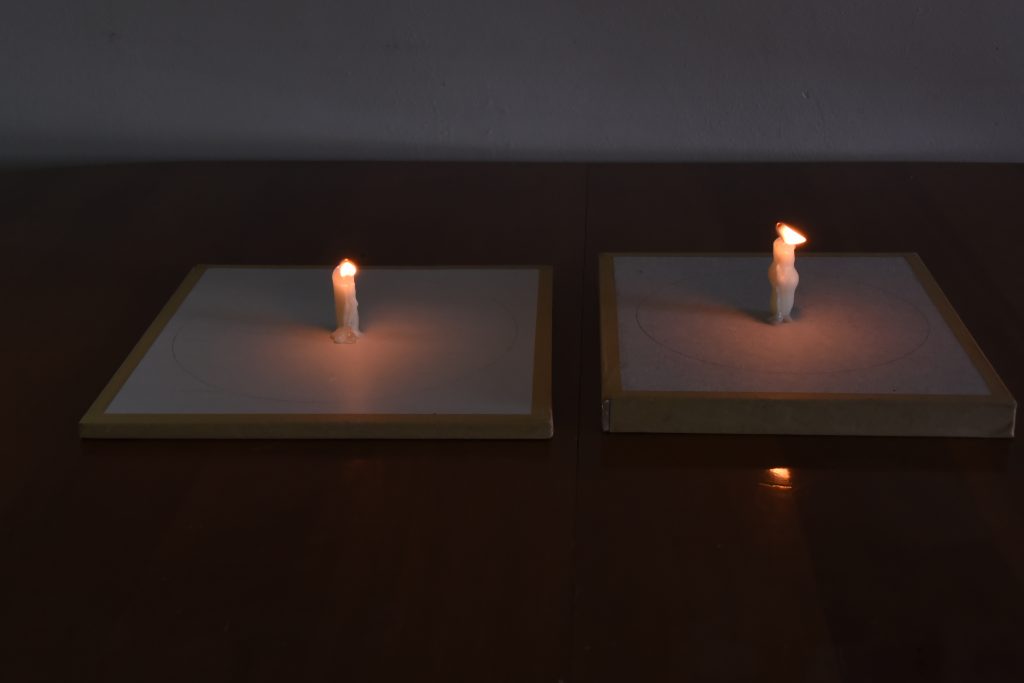
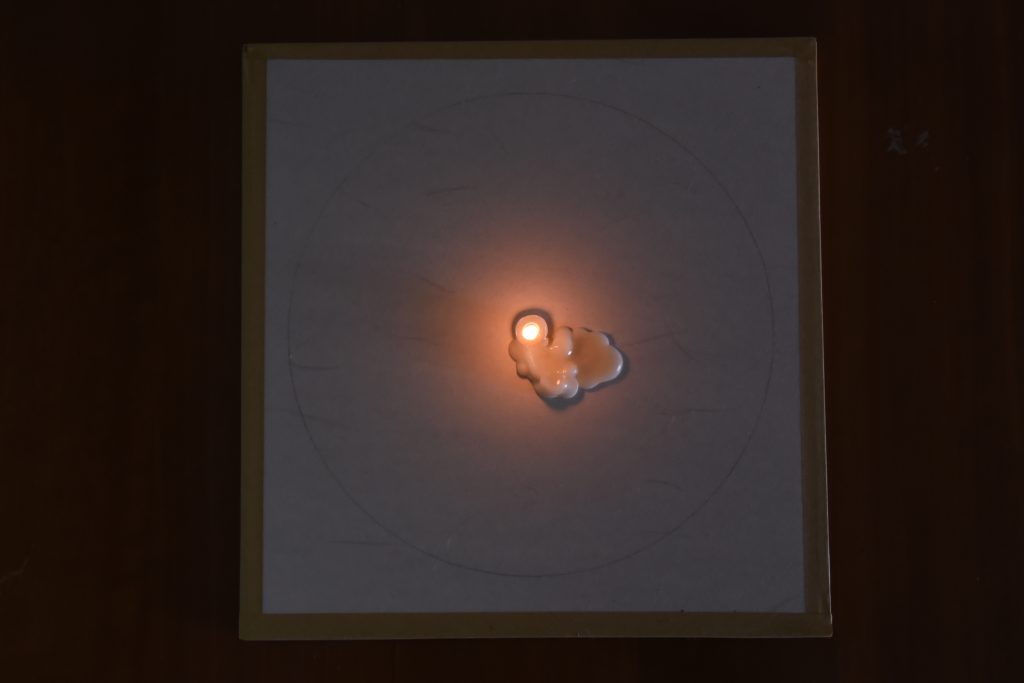
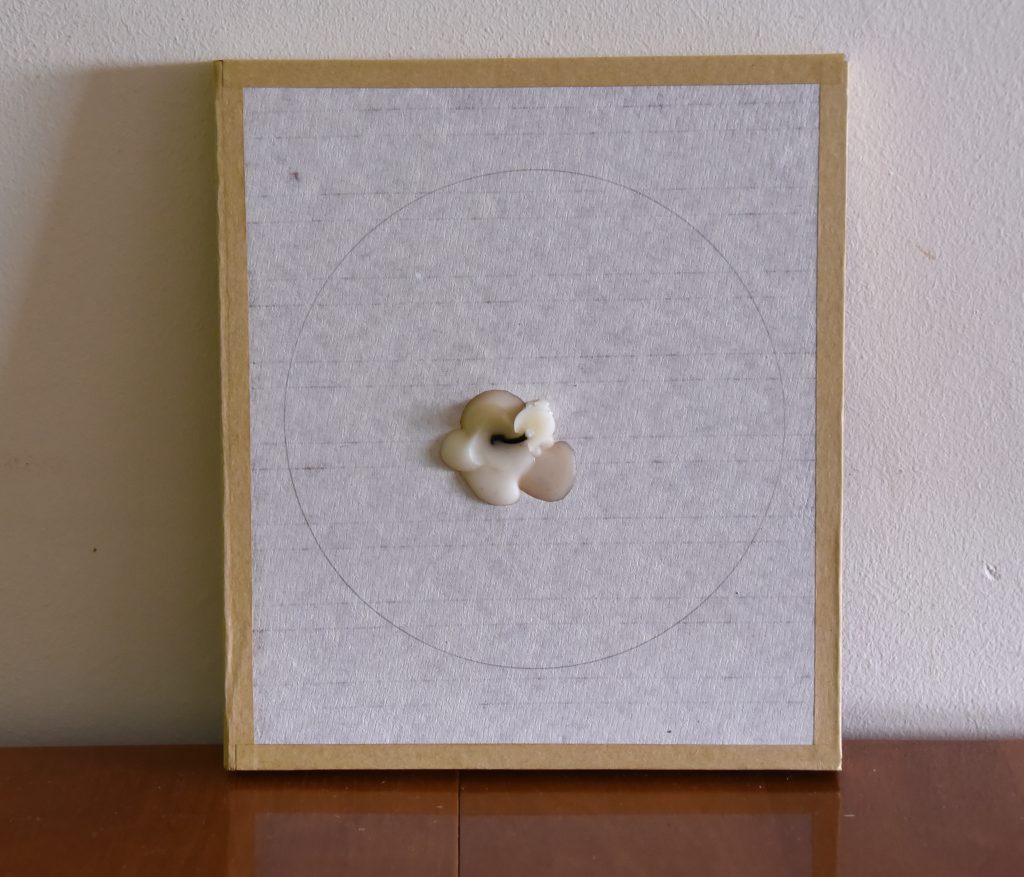
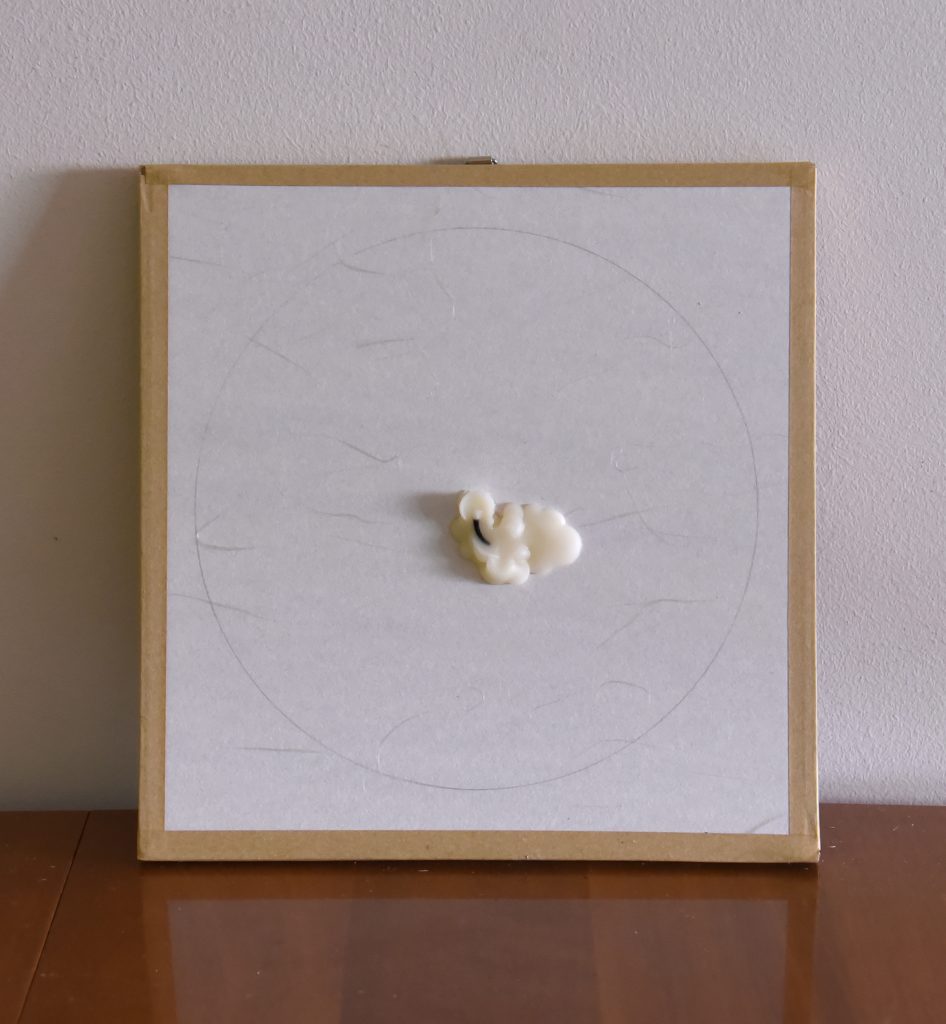
These wax stains as concrete visualization of a duration of time. Though we constantly measure it, and feel short of it, it’s hard for us to really grasp time.
Perhaps these clocks keep track of a particular activity (e.g. all the conversations I have with someone). So that the accumulation of wax shows all the time I’ve spent on something, with my attention focused. Instead of distracted, scattered, which is how a lot of us usually experience modern time.
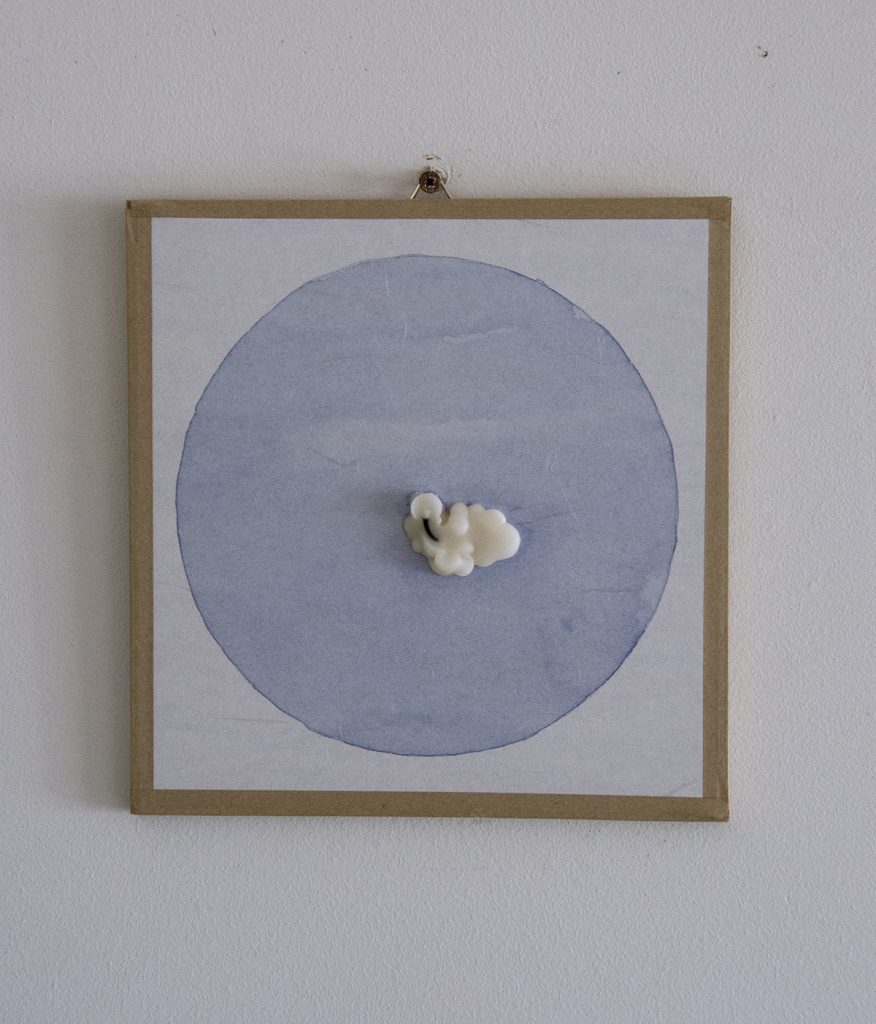
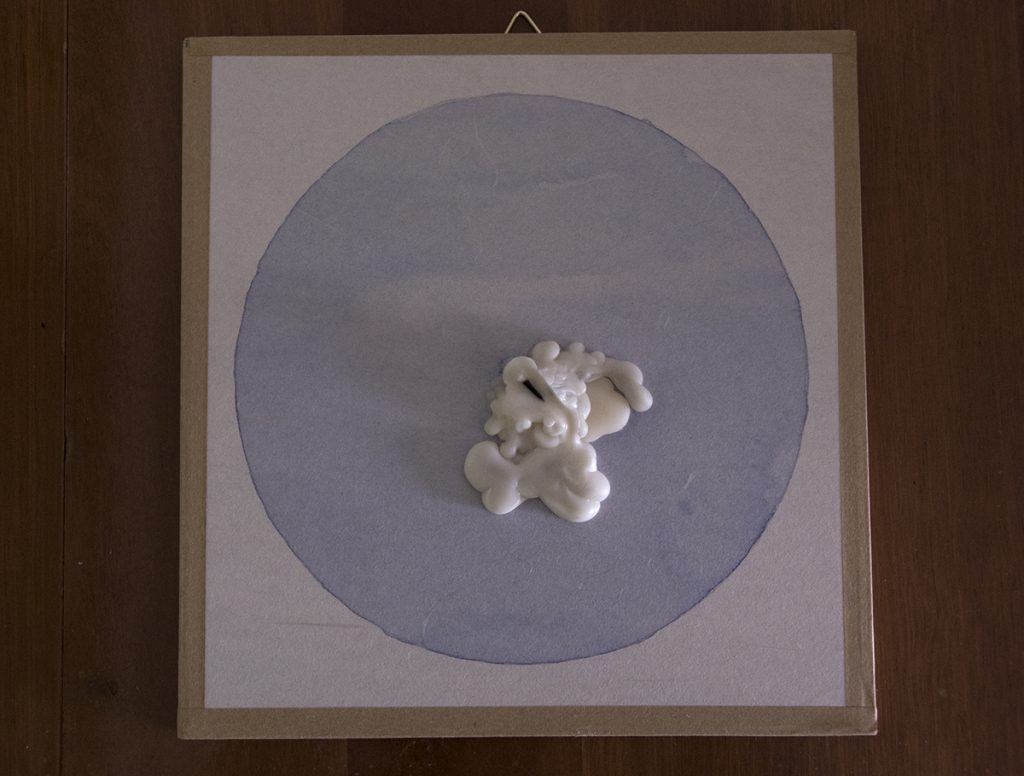
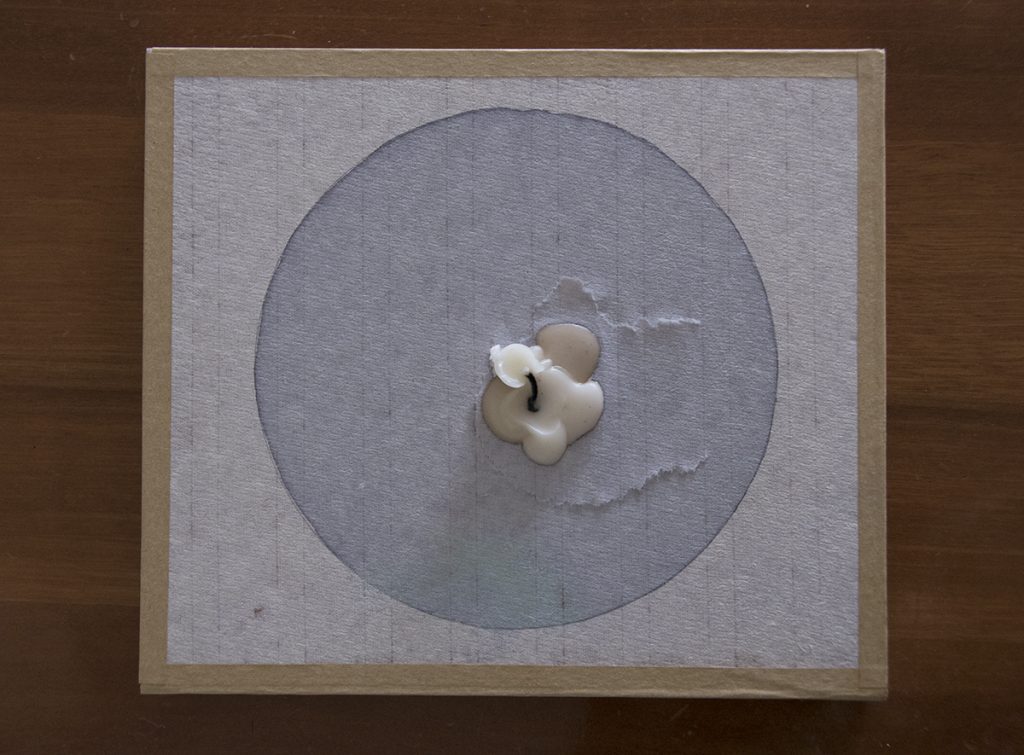
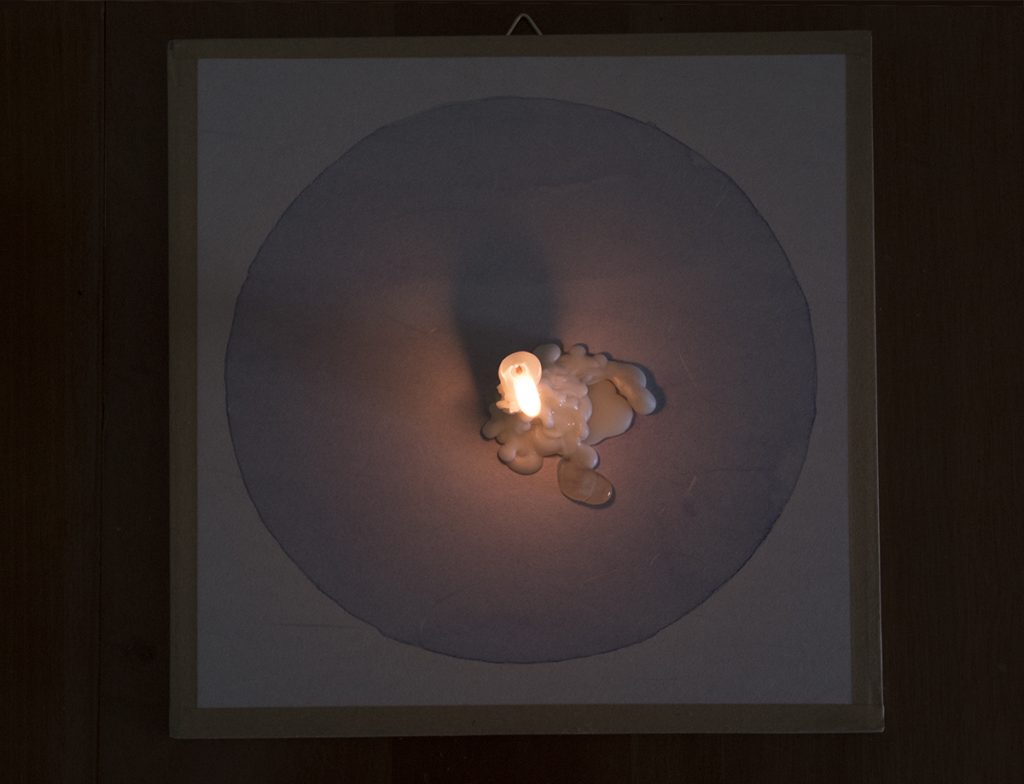
Inks made from beetroot, bluepea flower, coffee, vinegar on rice paper and watercolour paper

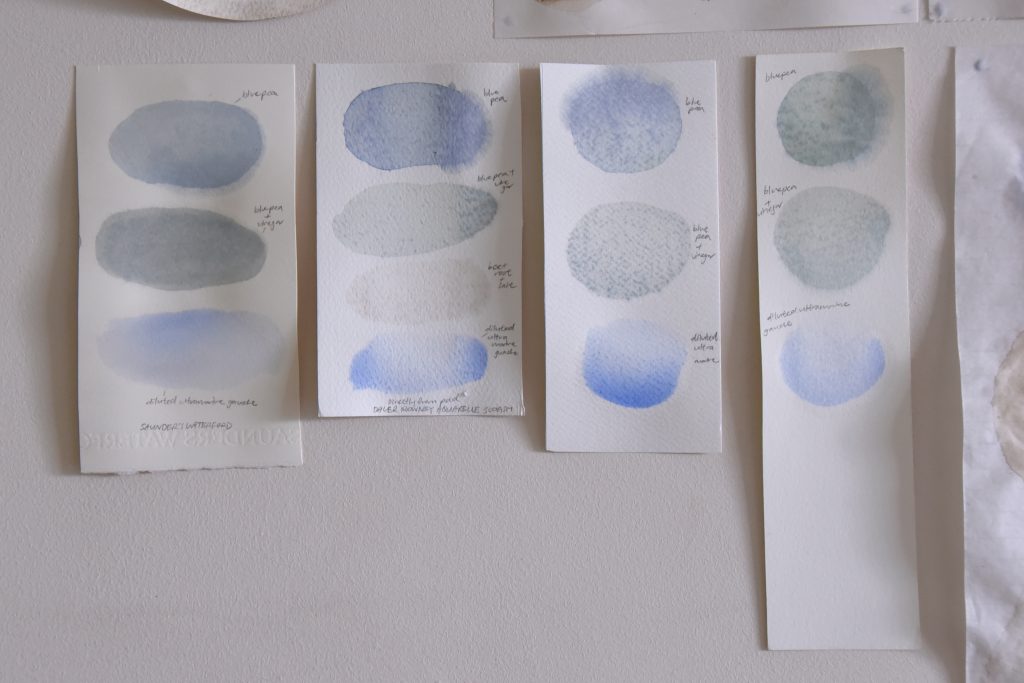
Thinking about where my materials come from. I’m captured by these two points:
This feels powerful and significant, especially while I read Braiding Sweetgrass and think about materials as gifts from nature.
We are often so detached from the sources of our material world. We think of materials as things contained in plastic boxes with price labels, rather than as matter with connections to plants and animals around us.

